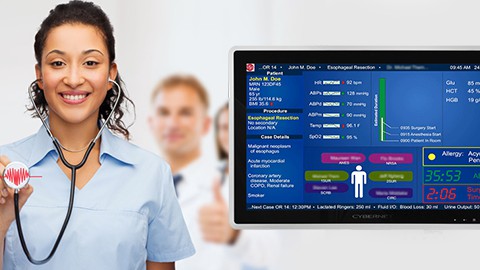We’ve all experienced that muggy, unpleasant summer day where it feels like the air itself is clinging to your skin. The culprit in that situation is high humidity, where high amounts of water vapor in the air make the weather feel hotter than it actually is. Humidity isn’t just an unpleasant weather phenomenon; it can also play hell with electronic devices, including computers.
While we often associate water damage to computers with sudden spills that dump liquid all over the monitor or case all at once, high humidity can be a constant and subtle threat that slowly degrades a computer’s internal components. Today, we’ll explore how medical computers can be engineered to be protected against high-humidity conditions.
What Is Humidity, and Why Is High Amounts of It So Bad?
Article Guide
Humidity is the measure of how much water vapor is currently present in the air. High temperatures typically also lead to high humidity, as water evaporates from its liquid form and becomes vapor. We humans perceive high humidity as a higher temperature because the evaporated water in the air makes it more difficult for sweat to evaporate from our bodies and thus cool us off.
While humidity is merely uncomfortable for humans, it can wreak havoc on electronics. High humidity can cause condensation on electrical components, leading to electrical shorts and corrosion on the circuit board itself. Therefore, preventing high humidity from occurring inside a computer’s casing is critical for any owner. This is doubly important for medical-grade computers managing life-sustaining equipment.
How To Protect Electronics From High Humidity
Protecting computers from humidity requires several design choices, such as:
- Ingress Protection (IP) Rating: a high IP rating protects against water of all kinds, both water jets and vapor. The higher the rating, the better the device’s protection from humidity, with a rating of IP65 being the industry standard for healthcare.
- Gaskets and Seals: gaskets and seals, typically made of rubber to give them a degree of flexibility, allow the computer to have openings while preventing humidity from getting inside the casing.
- Materials Selection: Choosing the right moisture-resistant materials for both the computer’s casing and internal components is critical for preventing corrosion. These materials are sometimes used as potting and are poured or injected into the case to fill in cavities and empty spaces.
- Conformal Coating: A protective layer of specialized material can be applied to a circuit board’s surface to protect it from moisture, as well as dust, chemicals, and temperature fluctuations. The most common types of conformal coatings are acrylic, urethane, and silicone. The most significant downside of these coatings is that they must be stripped off if you want to change any of the components. However, this isn’t an issue for users who don’t want to alter their device and would rather keep it the same throughout its lifecycle, such as healthcare providers.
Touch Screens For Wet and Humid Environments
Touch screens are incredibly convenient as user interfaces and are a fixture on both medical-grade tablets and all-in-one medical PCs. However, PCAP touch screens are vulnerable to interference from water, both in terms of causing damage and generating false inputs on the screen.
False inputs on your smartphone while scrolling TikTok is one thing. A false input on a tablet or computer connected to a patient’s medical device is entirely another. Therefore, touch screens can integrate features to counter this threat, such as:
- Customized Touch Algorithms: The parameters for a touch screen, such as sensitivity, touch area size, and multi-touch capabilities, can all be adjusted. This lets the end-user adjust the device for different operating conditions. If they don’t expect to use the multi-touch function, for instance, they can shut it off and prevent false inputs caused by water or humidity.
- Water Rejection: Water droplets and moisture have a particular type of input on a touch screen that algorithms can be optimized to ignore.
- Water-Repellent Coatings: A hydrophobic coating can be applied over the touch screen’s surface to repel water, preventing it from remaining or collecting on its surface.
Closing Thoughts
Humidity can cause severe damage to computers if it isn’t accounted for. Fortunately, with the right design features internally and for the computer’s touch screen, you can continue to enjoy and rely upon your medical PC or tablet no matter how humid it gets.
If you’d like to learn more about medical computers designed to operate in wet or humid environments, contact the team at Cybernet Manufacturing. We’d be happy to discuss further how our products are engineered to work in even the harshest environments.
Join the conversation and connect with us on this and other relevant topics – Follow us on Facebook, Twitter, and LinkedIn.
Why Fanless Medical Computers are a Must for the Medical Profession
July 9, 2015
The enterprise industries and the healthcare profession have been greatly affected by the increasing use of all-in-one computers and similar devices. The healthcare profession has grown to rely more and more on medical…
0 Comments5 Minutes
You Can't
Learn from a Pop-up
But we can deliver knowledge to your inbox!
We dive deep in the industry looking for new trends, technology, news, and updates. We're happy to share them with you.
Knowledge, News, and Industry Updates Right in Your Inbox



